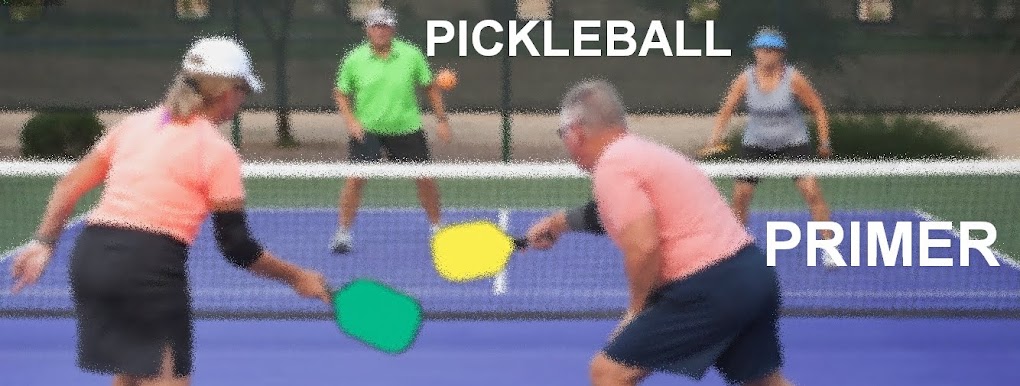Clearly, it was a stroke of genius (pun intended) in 1965 to borrow elements of three games to create what would become known as pickleball. A key element of the pickleball game happened by happy accident and a fluke of circumstances. Here's the most widely circulated version of The Birth of Pickleball:
"After playing golf one Saturday during the summer, Joel Pritchard, congressman from Washington State and Bill Bell, successful businessman, returned to Pritchard’s home on Bainbridge Island, WA (near Seattle) to find their families sitting around with nothing to do. The property had an old badminton court so Pritchard and Bell looked for some badminton equipment and could not find a full set of rackets. They improvised and started playing with ping-pong paddles and a perforated plastic ball. At first they placed the net at badminton height of 60 inches and volleyed the ball over the net. As the weekend progressed, the players found that the ball bounced well on the asphalt surface and soon the net was lowered to 36 inches. The following weekend, Barney McCallum was introduced to the game at Pritchard’s home. Soon, the three men created rules, relying heavily on badminton. They kept in mind the original purpose, which was to provide a game that the whole family could play together."
Note the key phrase: "The property had an old badminton court." Viola! Everything that is pickleball today began because of an old badminton court. For all practical purposes, a pickleball court is identical to a badminton court. Of course, there are some nuances of the rules and lines as well as major differences in the net and equipment but the pickleball game is totally grounded on a badminton court.
Above are the official dimensions of a pickleball court. Below you can see how this compares to regulation badminton court. The short service line in badminton becomes the "no volley" line in pickleball.
The graphic below shows how the pickleball court is utilized in play.
The pickleball court is MUCH smaller than a tennis court--roughly a quarter of the size.
In fact, four pickle ball courts can be set up utilizing one tennis court, as you can see in the photo below. The smaller size of the pickleball court is one of its primary attractions.
Information below is presented for our Idaho Falls Friends. We will soon have more information about other regional courts.
The City of Idaho Falls Parks & Recreation Division converted two tennis courts at Lincoln Park for pickleball play. Fortunately, P&R wisely decided to create only six pickleball courts so there is plenty of extra room inside the fenced former tennis court area. Note the very clean looking court lines that are easy to understand and utilize in actual play.
The Parks & Recreation Division also created two regulation pickleball courts inside the gymnasium of the Idaho Falls Recreation Center. Both courts will be set up for play three days each week:
Monday 8-10 AM; Wednesday 9-11 AM and Friday 6:30-8:30 AM. Admission to the Rec Center is $3 for adults (13-61) and $2 for Seniors 62 and over..













